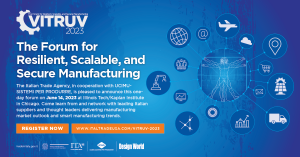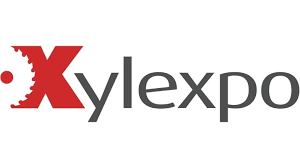THIS INTERNATIONAL ON DEMAND SUMMIT IS AN INDUSTRY… More
Prospects for 2020: from reset to reinvention
As a result of this shock, the post-COVID-19 manufacturing industry is expected to undergo a paradigm shift both in terms of location and production methods.
A major concern will be worker safety, which will be in addition to other factors that are already under attention, such as cost-effectiveness and corporate profits.
Some economists, in an April 19, 2020 article, told the Boston Herald newspaper that many U.S. companies are considering withdrawing production from China and bringing it back to the United States, seeing such a move as a precondition for reviving the coronavirus-affected economy. Returning parts of manufacturing to the United States would be an economic benefit to the country and would be in line with a national security concept that keeps in mind the possibility of future pandemics and new health system crises.
"With respect to this 'black swan event' I think the good news will be to bring more manufacturing back to America, which will get people back to work," said Professor Nada Sanders of the D'Amore-McKim School of Business at Northeastern University. Low-interest loans and tax incentives from the federal government would encourage companies to move production from China to the United States, Sanders added.
Automation will be a key component of the effort to revive U.S. manufacturing. Previous relocation trends have also been fueled by the search for lower labor costs and higher productivity. Given the increase in productivity enabled by automation and robotics and the growth in wages in China and several other countries, the convenience has diminished or it has even become more efficient to bring some of the offshored activities back home. Automated production will not necessarily decrease the demand for low-skilled labor; rather, it will create new jobs and opportunities for digitization experts.
In some cases this will be done through the use of advanced technologies and automation machinery. We have an example from last year, when Amazon began using Italian machinery in dozens of its warehouses for contactless packaging, a key feature for the post COVID-19 manufacturing industry. The machines are manufactured by Italian company CMC Srl under the name CartonWrap, can pack up to 900 boxes per hour and require only two operators, one to load customer orders and another to stock glue and cardboard.
"COVID-19 has fundamentally altered our concept of normal," Marina Gorbis, executive director of The Institute For the Future, a Silicon Valley-based research center, told ABC News microphones in April 2020, "and we are only in phase 1 of the crisis, the 'Reaction,' which will be followed by phase 2, the 'Reset,' when we put the crisis in a broader perspective and assign meaning to it. Finally will come phase 3, the 'Reinvention'. If we can learn anything from this crisis, it is that Phase 3 must include building new systems that reward and incentivize long-term thinking and acting."
As demonstrated by the three-dimensional printing industry, the 're-invention' phase is already underway, and U.S. companies in the industry have partnered with local universities to address the crisis caused by COVID-19. Creative Tangible, which has 100 3D printers in its Newark, New Jersey warehouse, in concert with Brooklyn competitor MakerBot and Columbia University has created the COVID Makers Response coalition. The group is currently printing about 2,000 masks a day, which volunteers in Manhattan assemble and send to more than 30 hospitals in the area. The open source methodology could also help strengthen this type of production system, as there is already a huge network of 3D printers throughout the country.
In fact, according to a report published in 2019 by the Federation of American Scientists, nearly 600,000 3D printers were sold in 2018 in the United States alone at a price of less than $5,000. Tangible Creative, HP and Shapeways have made their design files available to anyone. "You don't need a mold," said Eugene Chang, co-founder of Tangible and director of industrial design. "You will receive a digital file that you can print by pressing the 'print' button, just like you do with e-mail using 2D printers."
Another benefit of technologies that depend heavily on automation is that they help stabilize productivity, output and sales. This benefits everyone, including managers and employees, who can more easily overcome emergencies, including those due to Covid-19.
History teaches us that short-term measures taken in response to global crises lead to changes that last for decades; in fact, what most of us considered normal has already begun to change dramatically. Understanding and acting on the new paradigms will provide ample opportunities for growth; manufacturers and service providers such as those mentioned above, namely CMC, Tangible Creative, and Amazon, can be seen as examples to follow in that direction.
Recent News
POSTED ON

























